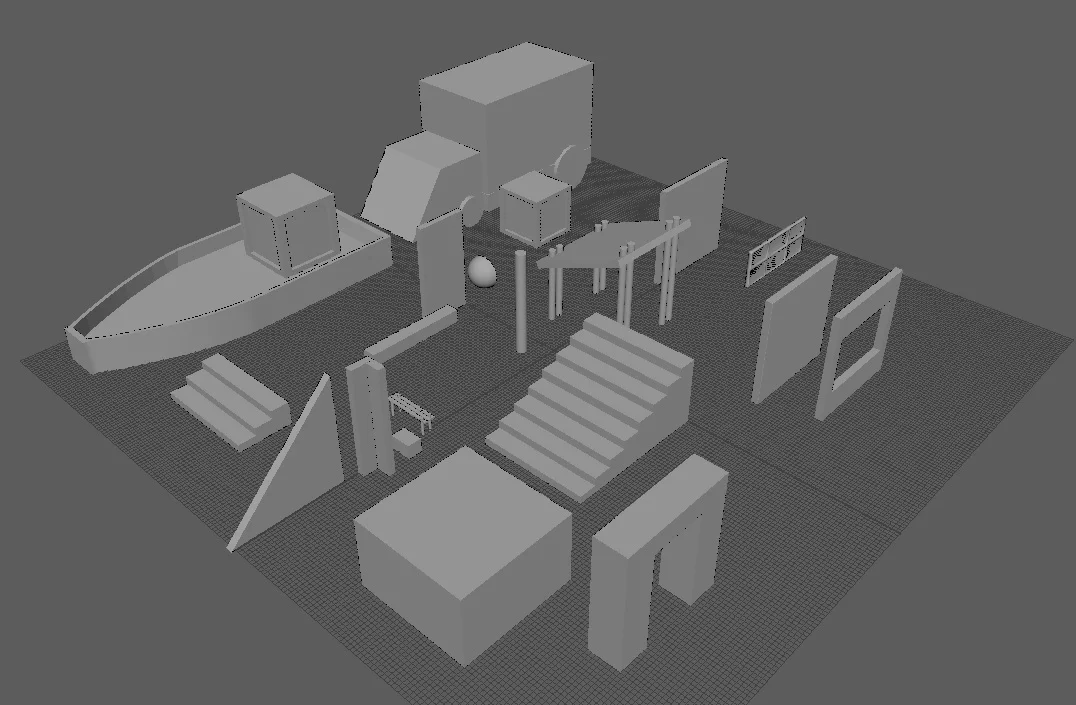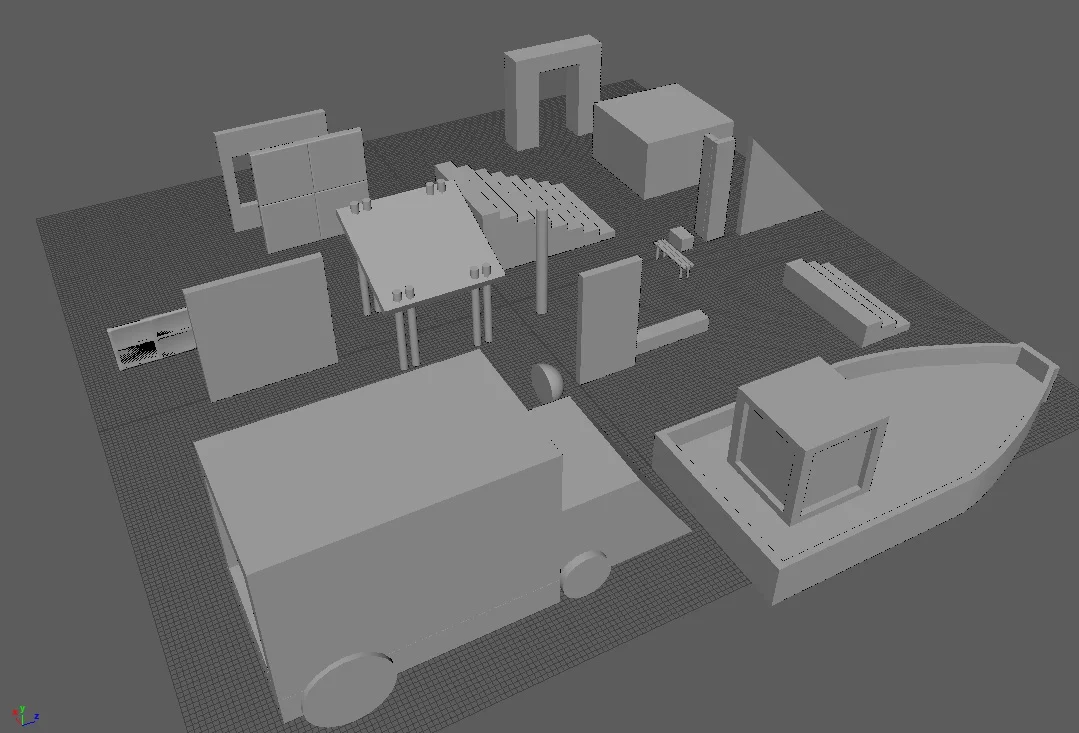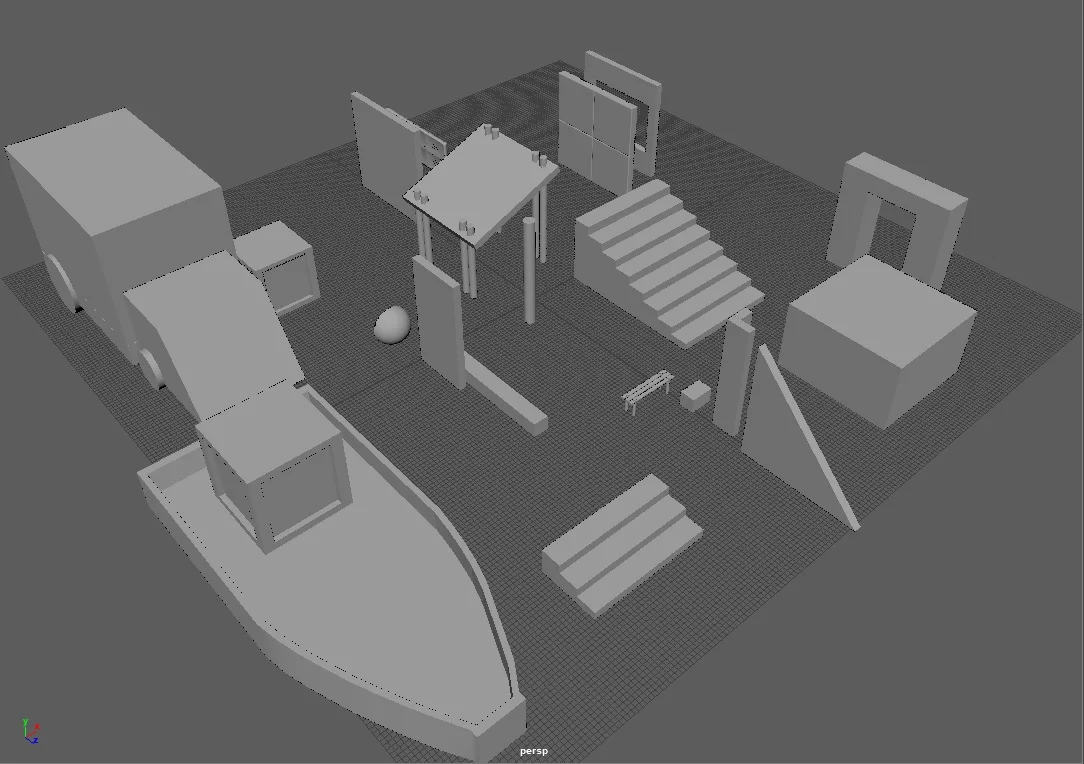dEATH oF A SNOWFLAKE (2017)
The list of objectives that I set out for myself in this project were the following: Experiment with the unreal terrain editor, add water and create a stealth oriented level. My sub objectives were to find interesting and intricate ways in rewarding players with: ammunition, health, pauses & safe zones, vistas and alternative paths to reach the main objective. I wanted to have a progressive "shaping" difficulty curve in which the player will start slowly and ease into the experience without any frustration; the difficulty will then ramp up higher once they progress through the level. As mentioned earlier, the player can approach the level in multiple ways; however, if they opt for the brute force route; they might encounter ammunition shortages, encouraging them to scour the rest of the map to replenish themselves.
The inspiration of this level came from a book I was reading called an Architectural approach to level design By Christopher W.Totten; describing multiple objectives that a level designer should keep in mind in order to evoke emotion from the player and keep them playing.
The avatar template and AI behavior came from the unreal asset store: Third person shooter kit
The modular assets were created by myself in Maya
Platform: PC
Genre: Third Person
Engine: Unreal Engine 4
Time: 2 weeks
Sounds: https://freesound.org
Modular
When I first dove into the level creation: The first task was to plan and identify potential objects that could be used throughout the level; the objective was to construct only using the selected pallet to create the level. Once all objects were constructed in Maya; all objects were imported into Unreal engine to be used in the level. The experience was quite turbulent, especially at the beginning; I had multiple UV layout issues with the light map baking: Strange black artifacts would appear on the objects. This problem was later resolved by creating custom UV layouts that are not the same ones that are created by unreal engine by default. Once all light map issues were addressed, all the BSP brushes were then replaced with the modular assets!
Terrain & water
The unreal terrain editor was a feature that I've been wanting to test extensively for a while; to my surprise, it was easy to use with a wide array of functions to make the landscape more believable. The terrain was the first asset I placed in the level whilst the BSP brushes came in shy for second place. Once the Maya assets were placed; naturally, the terrain needed some modifications to encompass itself appropriately around the playable gamespace. For the negative place, I simply raised the terrain so that the character could not climb over the hills.
The water was another objective that I wanted to experiment with, which took fruition later on in the development; I happened to stumbled into a very well presented and informative online tutorial which motivated me significantly to add it into the level. The inclusion of the sea then forced me to change the layout of the level even further to make it resemble to that of a port; however, I do believe that the level turned out much better because of it, so it was worth it!
Night time & Reward
I knew from the beginning that the level was supposed to be focused on stealth approaches; therefore it was more suitable for the time of day to reflect that of night. The only obstacle I had with this task was: "How dark should it be, so that players do not lose themselves?" This lead to multiple baking, directional light angles and intensity changes to create a sweet spot between a dark mood and visibility. To make things easier for the player, a beginning boat ride sequence was added so that they can view the level from a certain perspective and see where they could potentially go; giving them a pre-emptive advantage on the enemy AI bots that are scattered around the level.
Last but not least; rewarding: the level can be challenging if the player does not keep a wary eye on their ammunition count. The design logic behind this decision was to encourage players to search and find ammunition and health. This was performed by using: long corridors having paths on either side that open up or are visible to entice players to explore and give bigger impressions of the area, this was done by using: lighting to guide players
- Darkness helps to plan your attack; use this to strike horror into your enemies by leaping from the shadows
- Bright white areas leads to danger; enemies will be patrolling these segments
- orange light areas inside buildings are favorable resting locations so players can rest; depending on the location: take a higher vantage point or plan their next route uninterrupted. This also helps to break the tempo and cues the player to reassess the situation.
Another side note is that: If players access or discover multiple paths; it's imperative to reward them for their discoveries in this case: health or ammunition.














